Input interpretation

2, 4, 6-collidine
Chemical names and formulas

formula | C_8H_11N name | 2, 4, 6-collidine IUPAC name | 2, 4, 6-trimethylpyridine alternate names | 2, 4, 6-trimethylpyridine | gamma-collidine | pyridine, 2, 4, 6-trimethyl- | S-collidine | sym-collidine mass fractions | C (carbon) 79.3% | H (hydrogen) 9.15% | N (nitrogen) 11.6%
Lewis structure
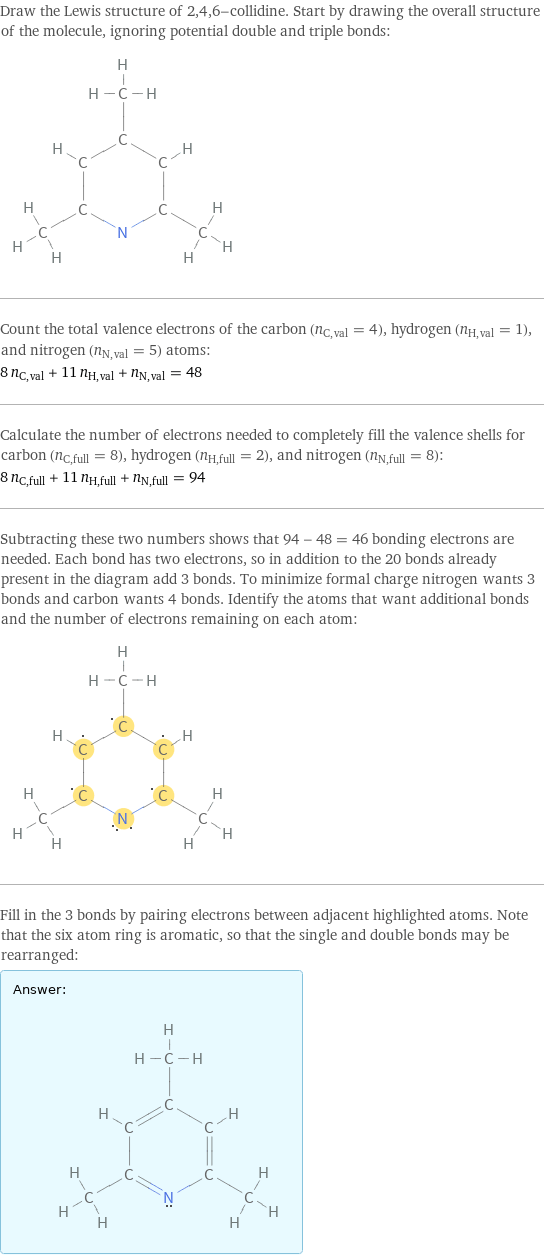
Draw the Lewis structure of 2, 4, 6-collidine. Start by drawing the overall structure of the molecule, ignoring potential double and triple bonds: Count the total valence electrons of the carbon (n_C, val = 4), hydrogen (n_H, val = 1), and nitrogen (n_N, val = 5) atoms: 8 n_C, val + 11 n_H, val + n_N, val = 48 Calculate the number of electrons needed to completely fill the valence shells for carbon (n_C, full = 8), hydrogen (n_H, full = 2), and nitrogen (n_N, full = 8): 8 n_C, full + 11 n_H, full + n_N, full = 94 Subtracting these two numbers shows that 94 - 48 = 46 bonding electrons are needed. Each bond has two electrons, so in addition to the 20 bonds already present in the diagram add 3 bonds. To minimize formal charge nitrogen wants 3 bonds and carbon wants 4 bonds. Identify the atoms that want additional bonds and the number of electrons remaining on each atom: Fill in the 3 bonds by pairing electrons between adjacent highlighted atoms. Note that the six atom ring is aromatic, so that the single and double bonds may be rearranged: Answer: | |
3D structure
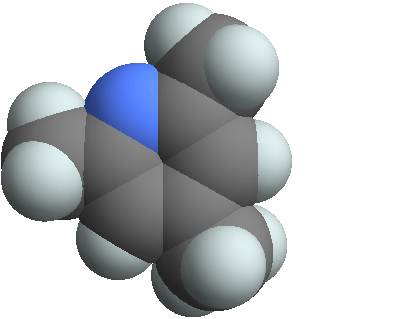
3D structure
Basic properties
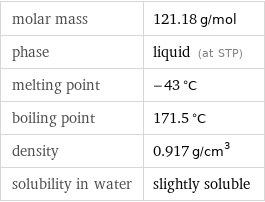
molar mass | 121.18 g/mol phase | liquid (at STP) melting point | -43 °C boiling point | 171.5 °C density | 0.917 g/cm^3 solubility in water | slightly soluble
Units

Liquid properties (at STP)
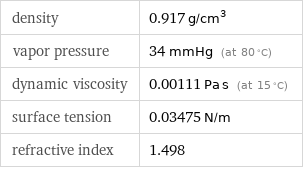
density | 0.917 g/cm^3 vapor pressure | 34 mmHg (at 80 °C) dynamic viscosity | 0.00111 Pa s (at 15 °C) surface tension | 0.03475 N/m refractive index | 1.498
Units

Thermodynamic properties
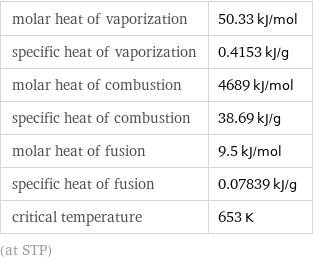
molar heat of vaporization | 50.33 kJ/mol specific heat of vaporization | 0.4153 kJ/g molar heat of combustion | 4689 kJ/mol specific heat of combustion | 38.69 kJ/g molar heat of fusion | 9.5 kJ/mol specific heat of fusion | 0.07839 kJ/g critical temperature | 653 K (at STP)
Chemical identifiers
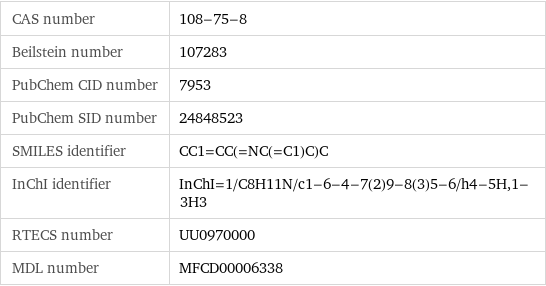
CAS number | 108-75-8 Beilstein number | 107283 PubChem CID number | 7953 PubChem SID number | 24848523 SMILES identifier | CC1=CC(=NC(=C1)C)C InChI identifier | InChI=1/C8H11N/c1-6-4-7(2)9-8(3)5-6/h4-5H, 1-3H3 RTECS number | UU0970000 MDL number | MFCD00006338
NFPA label

NFPA label
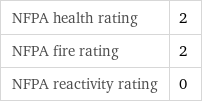
NFPA health rating | 2 NFPA fire rating | 2 NFPA reactivity rating | 0
Safety properties

flash point | 57.22 °C lower explosive limit | 1% (concentration in air) upper explosive limit | 8.9% (concentration in air)

DOT hazard class | 3 DOT numbers | 1992
Toxicity properties

RTECS classes | other